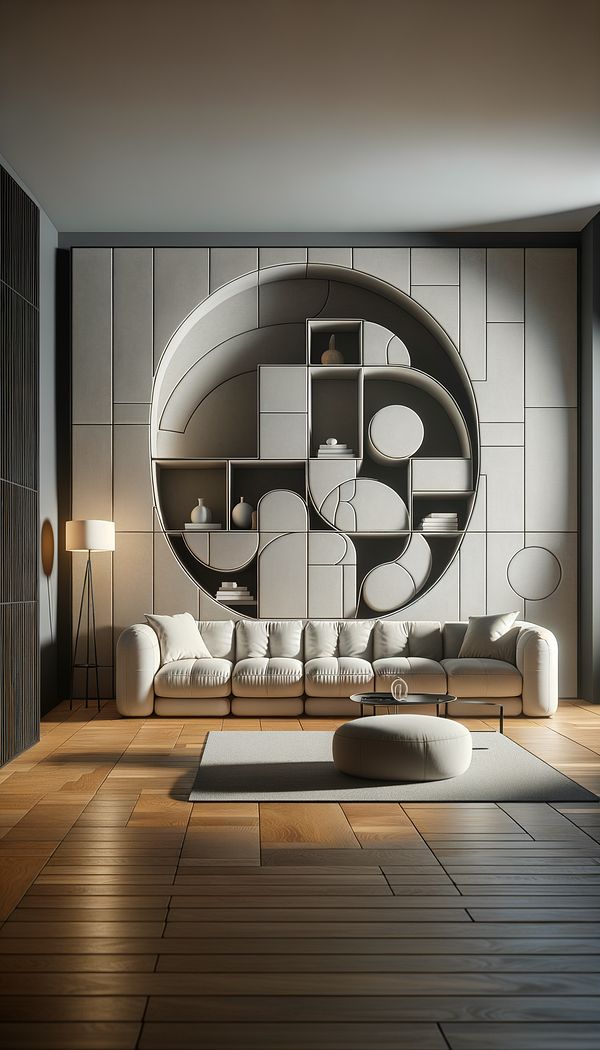What is Segmental?
Segmental refers to parts or segments of a whole, often relating to design elements divided into sections.
Description
In the realm of interior design, the term 'segmental' is used to describe elements that are divided into sections or segments, rather than being a single, continuous piece. This concept can apply to a wide range of interior and architectural elements including walls, ceilings, flooring, and furniture, among others.
Segmental designs can bring a dynamic and modular aspect to spaces, allowing for greater customization and flexibility in layout and function. For example, segmental furniture can be rearranged to suit different needs and spaces, while segmental walls or flooring can create unique patterns or functional zones within a room. Furthermore, the modularity of segmental elements can make them ideal for adapting spaces to evolving needs or updating aesthetics with less effort than full renovations require.
The segmental approach to interior design emphasizes both form and function, marrying aesthetics with practical considerations. By incorporating segmental elements, designers can create spaces that are not only visually appealing but also highly adaptable and functional.
Usage
A common application of segmental design in interior spaces is the use of segmental sofas, which consist of multiple pieces that can be arranged in various configurations to suit different room layouts and seating needs. Similarly, segmental walls and partitions can be used to divide open-plan spaces into more defined areas. In flooring, segmental designs are often seen in the use of different materials or colors to demarcate specific zones or pathways within a space.
FAQs
-
What makes segmental design beneficial?
Segmental design offers flexibility and adaptability in layout and usage, allowing spaces to be easily modified to fit changing needs or preferences. Additionally, it encourages a creative approach to space planning and can enhance the aesthetic appeal of a space through pattern and texture variation.
-
Can segmental design be applied to any interior style?
Yes, segmental design can be integrated into virtually any interior design style, from modern to traditional, as it focuses on the structural layout and function of pieces rather than their stylistic attributes alone.
-
How does segmental design impact space planning?
Segmental design significantly influences space planning by introducing modular elements that can be rearranged or repurposed, offering a highly customizable approach to defining and using spaces efficiently.
Practical Application
When incorporating segmental elements into a design, consider the overall flow and function of the space. Use segmental pieces to create focal points, define areas within an open-plan layout, or introduce texture and pattern variation. Additionally, think about the long-term flexibility of the space; choosing segmental furniture and architectural elements that can adapt to future changes can add significant value to a design.
-
Architectural Elements199 articles
-
Design Styles478 articles
-
Furniture Types599 articles
-
Space Planning & Layout134 articles
-
Decorating Principles & Elements330 articles
-
RhythmRhythm in interior design refers to the visual flow and repetition of elements to create a sense of organized movement.
-
Waterfall SkirtA waterfall skirt is a continuous piece of fabric or material that drapes seamlessly from the top of a furniture item to the floor, covering its legs.
-
Duncan PhyfeDuncan Phyfe refers to a style of American furniture that became popular in the early 19th century, characterized by its classical design and high quality of craftsmanship.
-
Four PosterA four poster is a type of bed frame distinguished by four vertical columns, one at each corner, often supporting an upper rectangular panel.
-
GlazeGlaze is a coating applied to surfaces for decorative or functional purposes.
